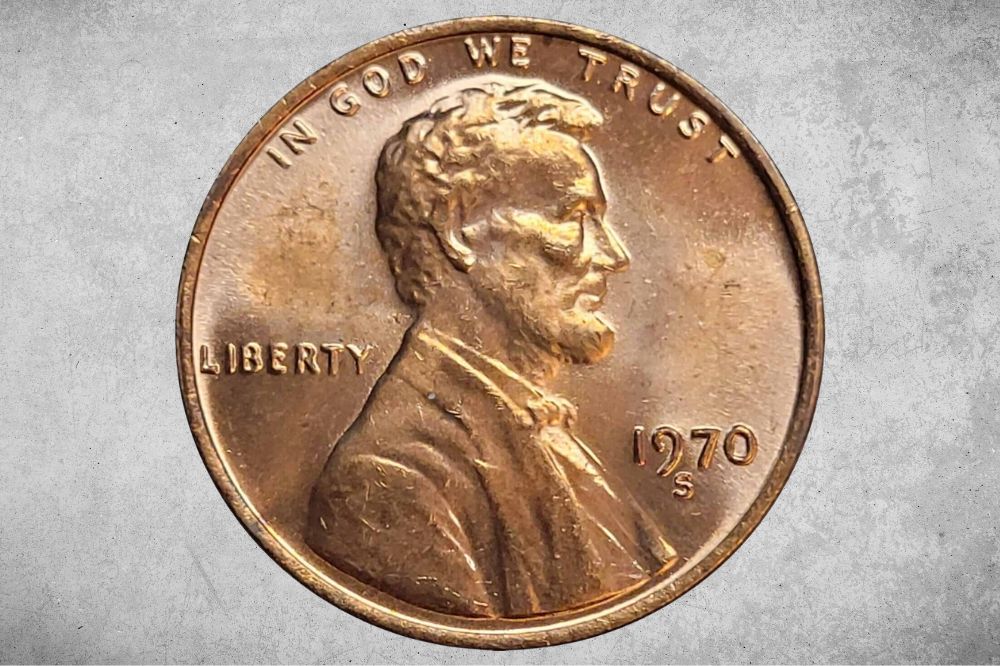Now it’s time to review one of the most valuable cents minted in the United States—the 1970 Lincoln Penny. This little 1 cent coin may seem like nothing special at first glance, but it actually has an interesting story to tell.
In this coin review, we’ll show you how special this penny is by providing a value chart with different prices according to its variety and coin grade. Be ready to be surprised at the highest recorded 1970 penny value that will make you search your coin purse for your own 1-cent 1970 penny by the end of this review.
1970 Penny Value Details
- Category: Lincoln Obverse; Memorial Reverse
- Mints: Philadelphia, Denver, San Francisco
- Total Mintage: 5,482,946,714
- Obverse Design: Abraham Lincoln
- Reverse Design: Lincoln Memorial Building
- Designer: Victor Brenner (obverse); Frank Gasparro (reverse)
- Composition: 95% copper; 5% zinc
- Diameter: 19 mm (0.74 inches)
- Mass: 3.11 grams
- Thickness: 1.52 mm (0.059 inches)
- Edge: Plain
|
1970 Penny Value Chart |
|||||
| Mint Mark | MS63 | MS64 | MS65 | MS66 | MS67 |
| 1970 No Mint Mark Penny Value (RD) |
$0.55 |
$0.75 |
$1.50 |
$6.75 |
$195 |
| 1970 D Penny Value (RD) |
$0.75 |
$1.10 |
$2.40 |
$20.25 |
$422 |
| 1970 S Small Date Penny Value (RD) |
$47.25 |
$61 |
$92 |
$143 |
$650 |
| 1970 S Large Date Penny Value (RD) |
$0.55 |
$0.75 |
$1.90 |
$18.90 |
$195 |
| 1970 S Doubled Die Obverse Penny Value (BN) |
$2,120 |
$2,380 |
$4,000 |
–
|
– |
| 1970 S Doubled Die Obverse Penny Value (RB) |
$3,000 |
$3,250 |
$7,500 |
–
|
–
|
| 1970 S Doubled Die Obverse Penny Value (RD) |
$3,300 |
$3,600 |
$11,200 |
$19,200 |
–
|
|
1970 S Proof Penny Value |
|||||
| PR65 | PR66 | PR67 | PR68 | PR69 | |
| 1970 S SD Proof Penny Value (RD) |
$74 |
$81 |
$101 |
$195 |
$650
|
| 1970 S SD Proof Penny Value (CAMEO RD) |
$88 |
$101 |
$122 |
$214 |
$845 |
1970 Penny Value and Varieties Guide
1970 No Mint Mark Penny Value (RD)
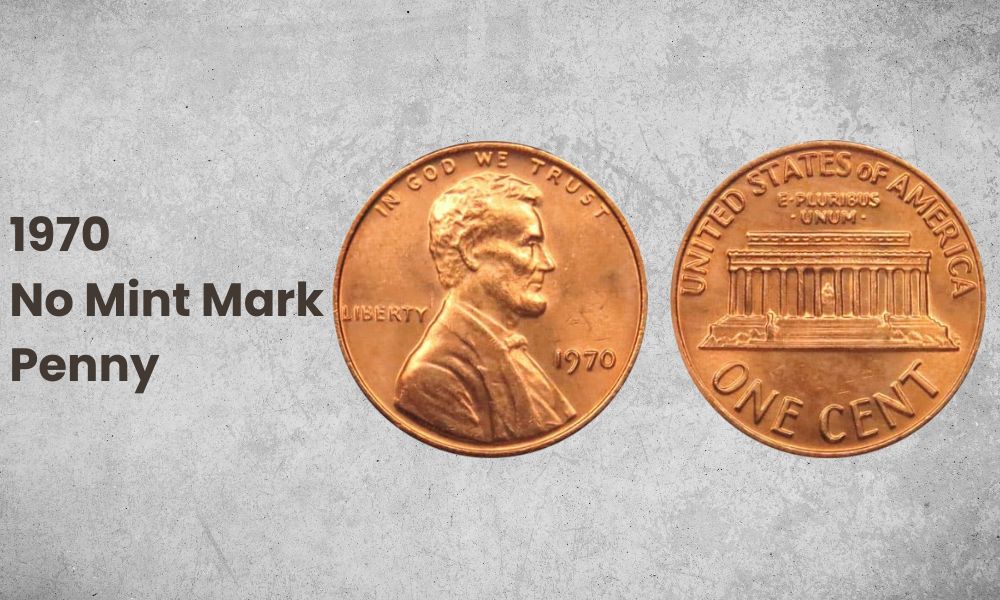
- Type: Lincoln Obverse; Memorial Reverse
- Edge: Plain
- Mint mark: None
- Place of minting: Philadelphia
- Year of minting: 1970
- Face value: $0.1
- $ Price: $0.55to $195
- Quantity produced: 1,898,315,000
- Designer: Victor Brenner (obverse); Frank Gasparro (reverse)
This 1970 Penny variety was sold at an auction back in 2014 at the Heritage Auctions, a renowned auction house for rare coins. A piece of 1970 No Mint Mark penny was graded as MS67+ Red by PCGS. Now, if you’re not familiar with coin grading, that basically means it was in almost perfect condition, and the “Red” part means that it still had its original copper color.
And here’s the really interesting part: it sold for a whopping $4,406! That might not sound like a lot of money for some people, but that’s a pretty impressive price value for a single penny.
1970 D Penny Value (RD)
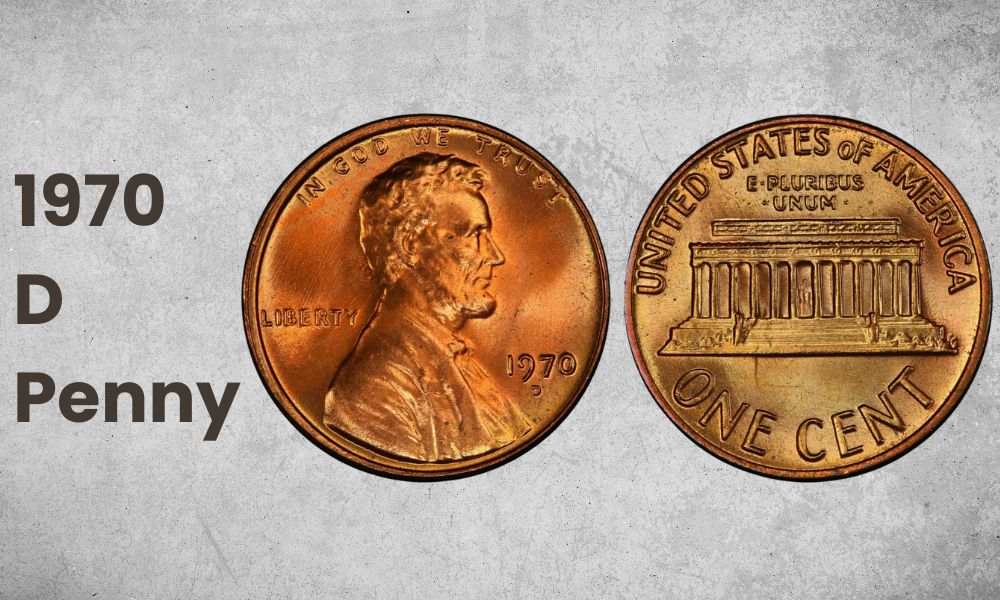
- Type: Lincoln Obverse; Memorial Reverse
- Edge: Plain
- Mint mark: D
- Place of minting: Denver
- Year of minting: 1970
- Face value: $0.1
- $ Price: $0.75to $422
- Quantity produced: 2,891,438,900
- Designer: Victor Brenner (obverse); Frank Gasparro (reverse)
The Denver Mint also produced cents in 1970 and created more than what the Philadelphia Mint produced of over 2 million pieces. It’s easier to distinguish between the cents minted in these two mint locations because of their mark. While the Philadelphia-produced 1970 penny has no mark, the Denver-produced cents have a small “D” mark on the coin’s obverse side.
They have the same composition; however, the 1970 D Penny is worth more than the 1970 penny without a mint mark.
On August 14, 2016, this exceptional 1970 D Penny (MS67+ Red) penny was also sold at the Heritage Auctions. The coin was presented in immaculate condition, displaying a brilliant red luster, and its rare condition was reflected in the final selling price of $2,820.
1970 S Penny Value (Small Date, Lg. Date, DDO)
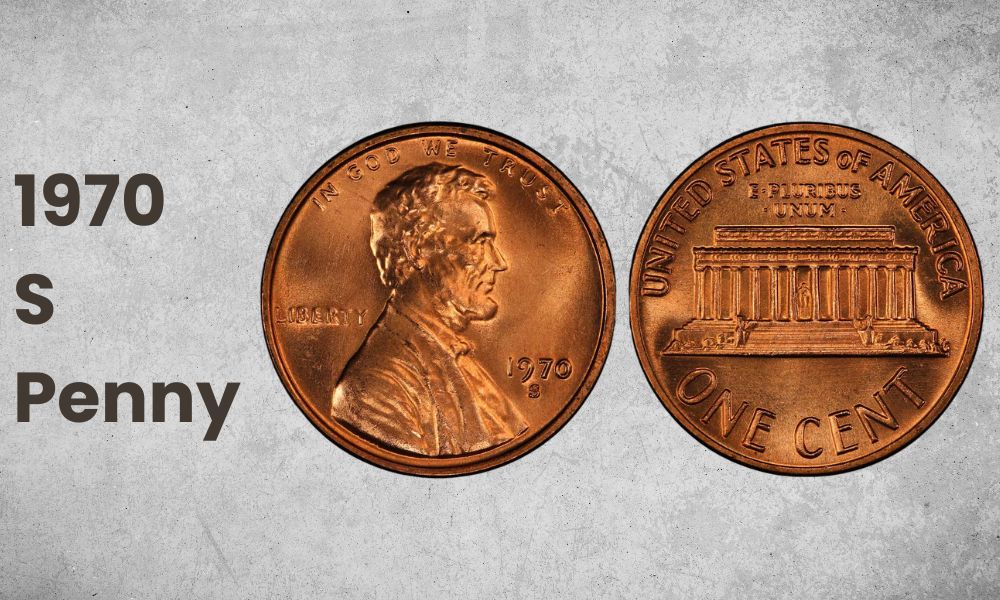
- Type: Lincoln Obverse; Memorial Reverse
- Edge: Plain
- Mint mark: S
- Place of minting: San Francisco
- Year of minting: 1970
- Face value: $0.1
- $ Price: $0.55to $19,200
- Quantity produced: 690,560,004
- Designer: Victor Brenner (obverse); Frank Gasparro (reverse)
There were three varieties of the 1970 S Lincoln Cent: the Small Date, Large Date, and Doubled-Die Obverse, and each variety differs from the other according to its colors (Red, Brown, and Red Brown)
The 1970 S Small Date Lincoln Cent is a type of penny collectors like to collect because it looks different from the more common Large Date variety. To tell the difference, you can look at where the top of the number 7 is compared to an imaginary line drawn between the tops of 1 and 0.
The Small Date also has weaker lettering than the Large Date. In excellent condition (MS66RD, MS67RD, or higher), the 1970 S Small Date Cent is hard to find and rare. Though an MS67 grade 1970 penny value is at $650 from our table, in 2008, a similar coin was sold at an astounding $2,646 at the David Lawrence Rare Coins Auction House and $2310 at the Legend Rare Coin Auctions in 2018.
The Large Date with the same grade was sold recently (January 2023) for $166 at the David Lawrence Rare Coins. But in 2016, one piece of this Large Date 1979 Penny was sold at $294.
On the other hand, a Doubled Die Reverse 1970 is the most valuable variety of this penny. One of them with MS64 Grade (BN) was sold at $2,777 at the Stack’s Bowers Auction House in 2011! That’s not all. Before that, just two months before this auction, a 1970 S Large Date Penny DDO (RB) was already sold at twice the value of the first one at $4,298.
If you think that’s already the highest ever sold, you’re wrong. Because in 2019, a 1970 S Large Date DDO (RD) Lincoln Cent was sold at $11,456. From 1 cent of its face value to thousands of dollars!
1970 S Proof Small Date Penny Value
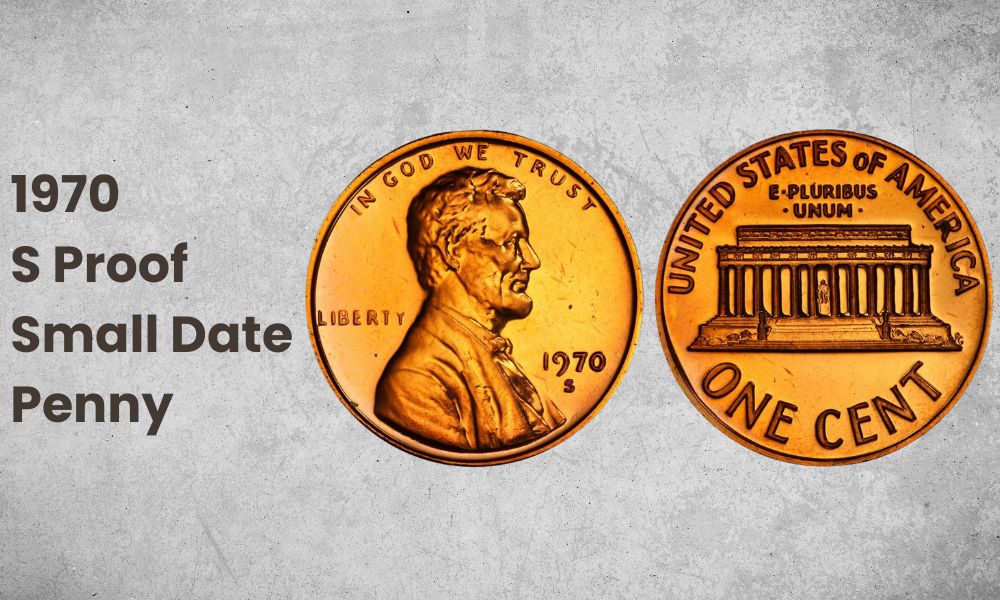
- Type: Lincoln Obverse; Memorial Reverse
- Edge: Plain
- Mint mark: S
- Place of minting: San Francisco
- Year of minting: 1970
- Face value: $0.1
- $ Price: $0.55to $19,200
- Quantity produced: 2,632,810
- Designer: Victor Brenner (obverse); Frank Gasparro (reverse)
The 1970 S Small Date Proof Lincoln cent is rare among collectors due to its limited mintage and unique characteristics.
The auction’s highest graded 1970 S Small Date Proof Lincoln cent was a PR69 Red Cameo specimen certified by PCGS, which was sold by Heritage Auctions for $881 in 2016.
In addition, a similar proof 1970 penny sold at auction for $18,400 in 2005 and more recently for $6,600 in 2020. Although the coin’s value fluctuates based on market demand and availability, it remains a rare item for collectors. Its mirror-like finish, sharp details, and strong contrast between the frosted devices and mirrored fields are due to its mirror-like finish.
1970 Penny Value History
The penny, also known as a one-cent coin or Lincoln Memorial cent is a widely recognized coin series produced from 1959 to 2008. Despite being obsolete, billions of these coins are still in circulation and will likely remain so for many years. The coins feature Victor David Brenner’s original 1909 vintage Lincoln head design and a tail design by Frank Gasparro created to commemorate Abraham Lincoln’s 150th birth anniversary.
The obverse of the penny features the profile bust of Abraham Lincoln, the 16th President of the United States, with the words “IN GOD WE TRUST” above his head and “LIBERTY” behind his back. The coin’s date is on the obverse’s right side, in front of Lincoln’s bust.
In 1952, the US Mint considered changing the design of the Lincoln penny but decided not to remove Lincoln’s image from the coin’s reverse. Instead, in 1959, the image of wheat stalks on the penny’s reverse was replaced with the Lincoln Memorial, while the obverse remained unchanged. The new design kept President Lincoln’s bust on the obverse and reduced the size of the “ONE CENT” denomination on the reverse.
As a consequence of the relatively high cost of living in the United States during the 1970s, the face value of the penny from that era has lost much of its purchasing power over time. However, due to its scarcity in production, numismatists hold the 1970 penny value in high regard and consider it a valuable addition to their collections.
The 1970 penny value offers collectors neat varieties, and rare coins, including the 1969 S doubled die that can fetch high prices at auction. The coin’s composition changed in 1982 from copper to copper-plated zinc, which led to some transitional errors.
1970 Penny Value Grading
The Lincoln cents are graded based on their condition, with the Sheldon Scale being a commonly used system that assigns a numerical value to coins. The scale ranges from poor to perfect mint state, and professional numismatists use a combination of numeric points and adjective grades to assign a grade to a coin.
Regarding the 1970 penny value, the most common coin grades range from Poor to Mint State Perfect. Each grade represents a different level of wear and tear, from indistinguishable and probably damaged to almost perfect mint state.
Learn more about the 1970 penny from this coin review, particularly about the different varieties of the 1970 S Penny (small date, large date, and DDO) was explained.
List of 1970 Penny Value Errors
1. 1970 Penny Value Double Die Error
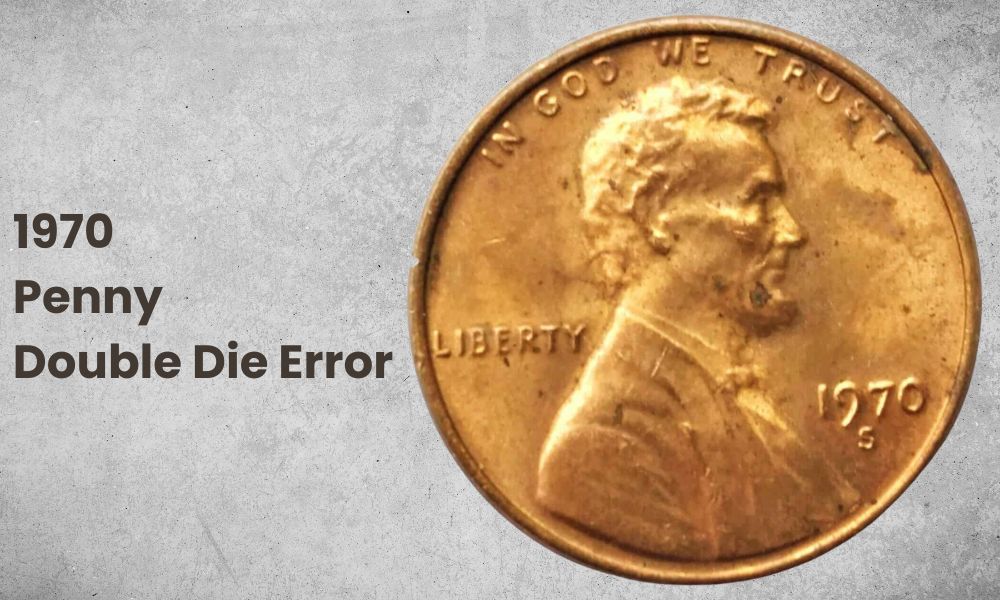
Considering a double die is a common minting error, it is no wonder even the 1970 pennies have them. This error is known for the presence of a small, raised line or spike that appears to protrude from the top of Lincoln’s head on the obverse side of the coin. In this particular 1970 penny error, the date and design on the front of the cent were stamped twice. If the coin is in excellent condition (MS65), it could be worth $12,500.
2. 1970 Penny Value Multiple Broadstruck Error
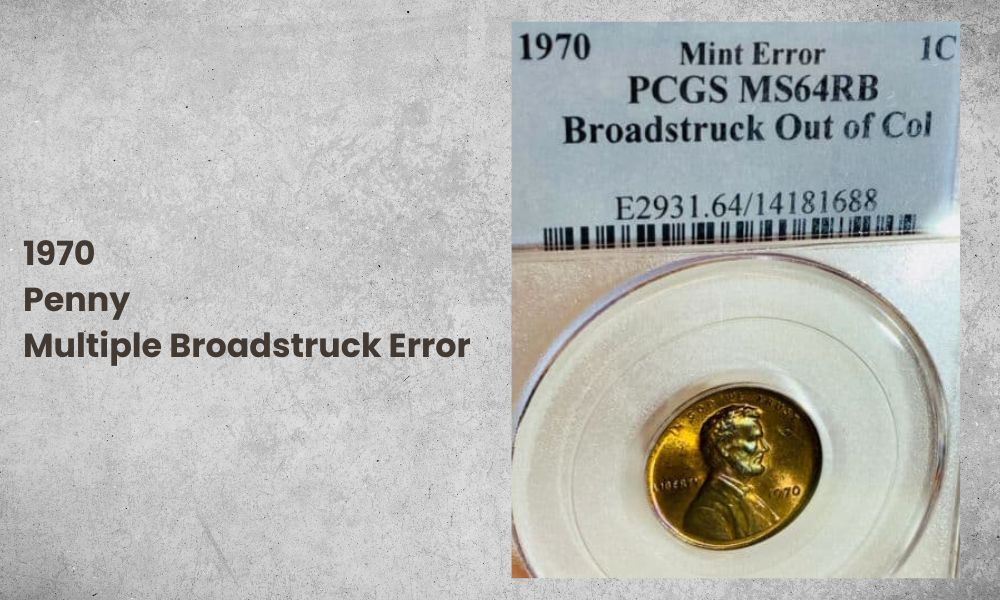
A 1970 S Large Date Lincoln Cent from the Heritage Auction website was made with a prominent error. It was struck five times and looks different than it was supposed to. The broadstruck percentages for each strike were 20%, 35%, 30%, and 35%. Some parts of four different dates are on it because of the mistakes. The coin is still considered valuable and was given a good grade by PCGS.
3. 1970 Penny Value Off Center Error
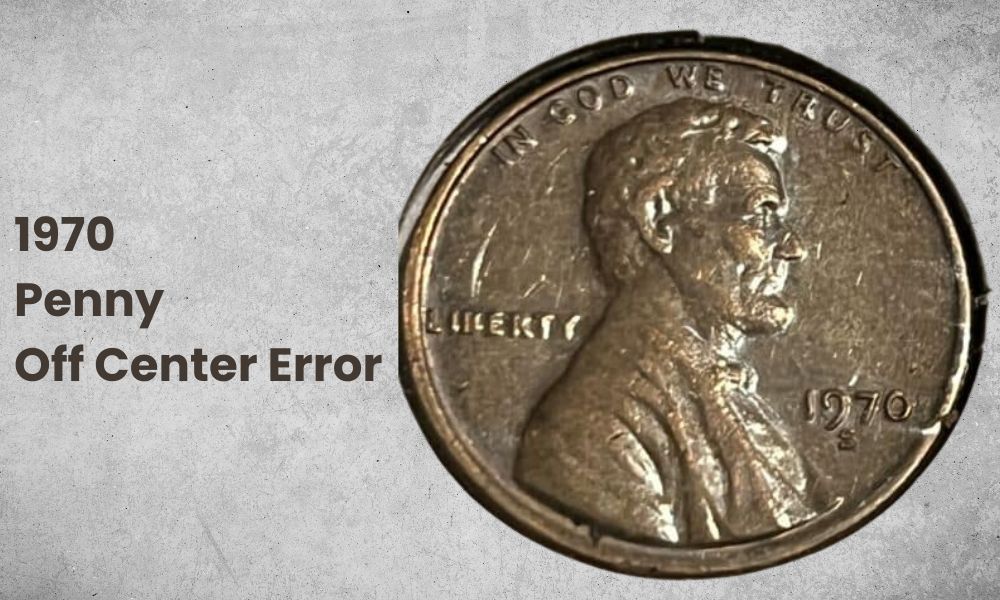
The off-center strike error on the 1970 penny can be identified by looking at the design of the coin. If the design is not aligned with the edge of the coin, it is likely an off-center strike error. These off-center strike errors can range from just a few percent off-center to as much as 80% off-center.
4. 1970 Penny Value Floating Roof Error
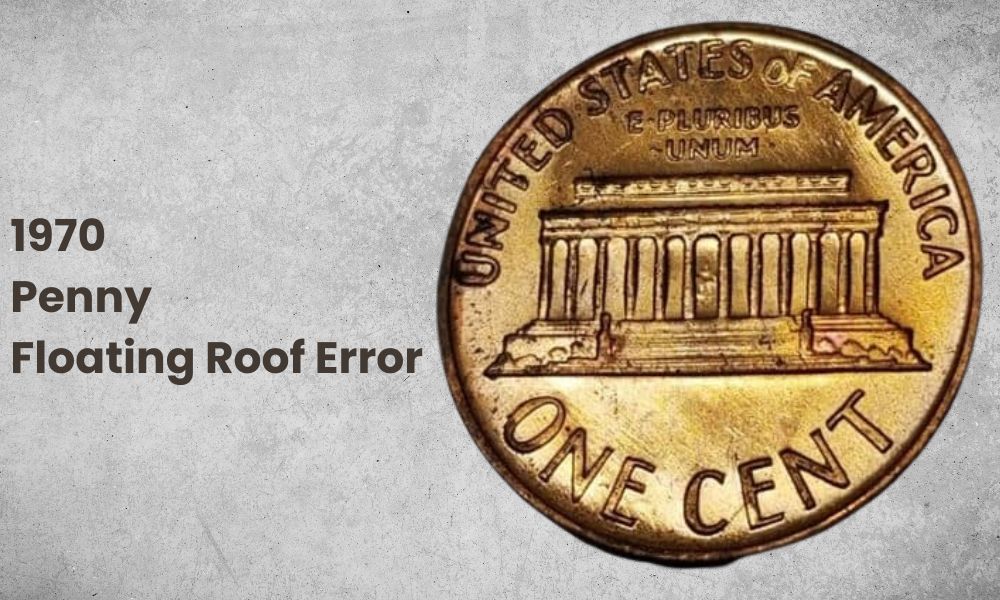
The 1970 floating roof penny error is highly prized by collectors and can fetch significant sums at auction. The error occurred because the design of the reverse die used to strike the penny was not properly aligned with the obverse die, causing the top section of the Memorial to be struck in a slightly different position than intended.
As a result, the top section appears disconnected from the rest of the structure, creating the illusion of a floating roof. Other 1970 penny value errors are “no FG” and “partial clips” errors.
For a rare 1970 Penny Value, here’s a coin review from Couch Collectible’s vlog.
1970 Penny Value FAQs
Q: How can you tell if a 1970 penny is a small date?
To determine if a 1970 penny is a small date, you can examine the date on the coin. The small date variety has a more delicate date, made with a finer punch. In contrast, the large date variety looks more even, especially the number 7.
Q: What is special about the 1970 penny?
The fact that it was produced to commemorate Abraham Lincoln’s 150th birth anniversary already makes 1970 1 cent special. But another remarkable thing about it is its 1970 S variety with a Double Die Obverse in different colors (red, brown, and red-brown). It reasonably makes them one of the most valuable coins in the coin market today.
